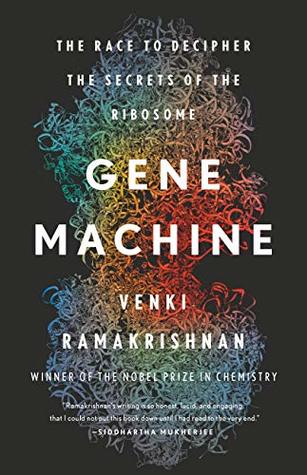More on this book
Community
Kindle Notes & Highlights
Read between
September 21 - September 24, 2019
To understand how calculating a map works, think of how a magnified image is obtained using a lens. Light rays are scattered from each part of the object. Each point on the image is produced by having the lens combine the scattered waves from every point on the object. The important thing is that the scattered rays exist whether a lens is there or not; the lens simply collects them to form an image. We’ve discussed how the wavelength of light is almost a thousand times too large to see atoms in a molecule. X-rays, on the other hand, have the right wavelength. Couldn’t we just use X-rays with a
...more
The problem is that there isn’t a good enough lens to make images of molecules with X-rays. But even if we could do that, there is an even more serious problem: unlike light, X-rays damage the molecules they hit. To see an individual molecule in sufficient detail, you would have to expose it to such a high dose of X-rays that you would end up destroying the molecule. In a crystal, however, the diffraction spots are the result of adding up the scattered X-rays from millions of molecules. The amplified signal from these millions of molecules means that you can get away with a much smaller dose
...more
Applying single-molecule physics to ribosomes has become an exciting new way of learning about these transitions. There were a couple of ways to do this. One of them was to attach fluorescent molecules to different parts of the ribosome or tRNAs. By measuring the resulting fluorescence in a technique called fluorescence resonance energy transfer or FRET, you can measure if the fluorescent molecules had moved relative to one another. With the structures in hand, the method could be used to attach the fluorescent molecules to precise points on the ribosome, and you could tell which parts of the
...more
A second physical method was even more amazing. Physicists had figured out how to trap single molecules in a field and exert forces on them. By doing this, they could actually do things like pull on the mRNA or the nascent chain and measure the force exerted by the ribosome when it translocates from one codon to the next. One of the leaders in this area is Carlos Bustamante at Berkeley, who has teamed up with his colleague Nacho Tinoco (who sadly died recently) and Harry Noller, making a formidable combination with their complementary expertise.
Jonathan figured that with new sequencing techniques you could break open a cell, chew up all the RNA, and then take the pieces of mRNA protected by the different ribosomes in the cell, amplify them, and sequence them. You would then get a snapshot of what ribosomes were doing on every region of every mRNA at a particular instant. The technique, called ribosome profiling, led to all kinds of unexpected findings. You could see where ribosomes slowed down on a piece of mRNA, where they piled up, and where there were fewer ribosomes than expected. You could also see which mRNAs were being
...more


